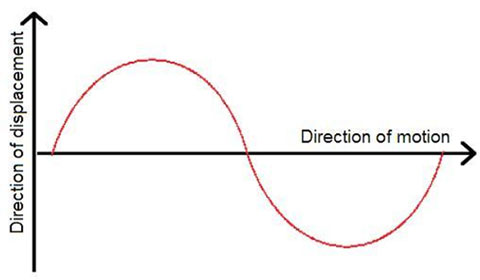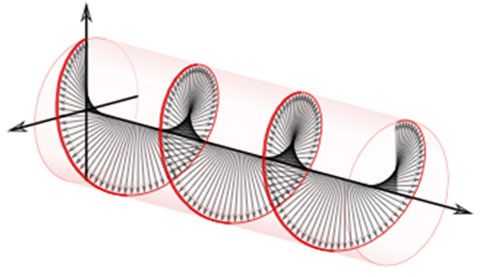3D and Polarization at Home
If you were around for the infancy of 3D, you likely remember the red-and-blue glasses that filtered the overlapping images projected on the screen to create the illusion of depth. In recent years, though, the glasses which direct these images to the proper eye have begun to rely on polarized light. This allows for better film quality, and allows us to turn a trip to the movies into a quantum physics experiment!

When you watch a 3D movie at the theater, what you’re really seeing is two separate images of the same scene, which were filmed simultaneously with lenses a few inches apart, like a pair of eyes. The special glasses make sure that the image from the left-hand camera only goes to your left eye, and the right-hand image to your right eye, so you see the scene as you would if you were actually there!
What You Need
- Two or more pairs of 3D glasses
- A partner
- A mirror
What to Do
1. Put on a pair of the glasses and take a look in the mirror--or at a friend, if they’ve got a pair on, too. Try closing one eye, then the other. What do you see?
2. Take a second pair and examine it under the light. Tilt your head, or the glasses, and take note of their properties at different angles. It may help to keep one eye closed.
3. Take off the glasses, turn them around, and hold them up to your eyes. Looking through the front of the lenses, examine another pair, being sure to look through both sides at a number of different angles.
What's Going On?
A photon is a single “ray” of light — a wave of electromagnetic energy moving through space. Unlike sound waves, which are longitudinal, photons are transverse waves. This means that, like waves in the ocean, the medium’s displacement is perpendicular to its direction of motion.

Since some of the water in an ocean wave is higher than average, and some is lower, there’s more potential energy in the water than there would be in a still pond.
But since real-life electromagnetic waves move in three dimensions, they can behave in much more interesting ways. Rather than wiggling “up and down” as in the image above, it’s more natural to think of a photon’s electric field as spiraling through space, spinning either clockwise or counterclockwise, as below:

Image Credit: Dave3457 via Wikimedia Commons
This is a circularly polarized photon, and the direction of its rotation is called its handedness. Its electromagnetic field doesn’t change in strength, only in the direction that it points. At a quantum level, all photons are either left- or right-circularly polarized, but our eyes can’t tell one from the other without the aid of filters like the lenses in 3D glasses, which only allow one kind to pass through.
3D movies use a special projector with a filter in front of it, which allows the image recorded by the left-hand camera to be projected only as left-polarized photons, while the right-hand camera’s image is made up of right-polarized photons. If you take off your glasses in the theater, you see both images (and get a headache!), but by closing one eye with the glasses on, you can turn it back into an ordinary “2D” film.
In light from most sources, like a flame, half the photons are right-handed, and half are left-handed. This type of light is unpolarized. If you look at a candle or a light bulb with polarizing glasses on, it should appear half as bright — each eye is only seeing half the photons it would ordinarily. Bizarre as it seems, some bugs have shells which only reflect one polarization; if you looked at them with those glasses on, they’d appear black in one eye, and green in the other!
Apply It!
3D lenses act as filters, only transparent to photons of a certain handedness. What happens to the right-handed photons when they strike the surface of the left lens on your glasses?
-Stephen Skolnick














